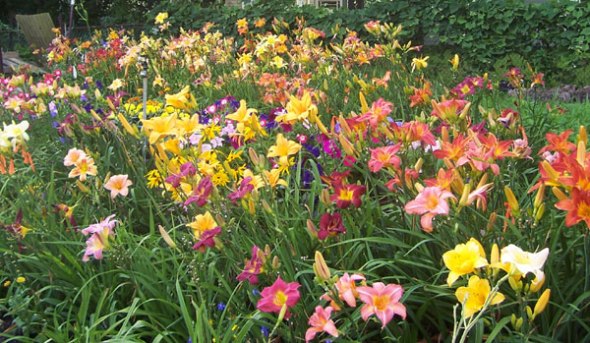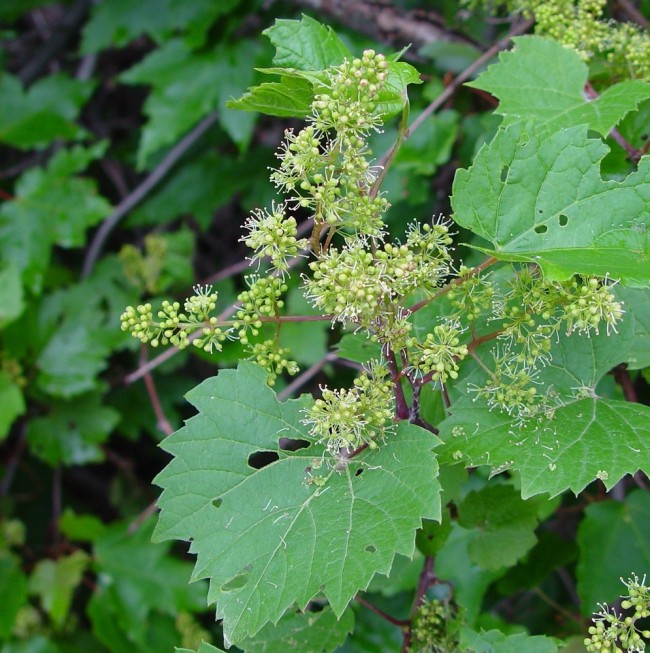
Hemerocallis fulva. http://www.northgeorgiadaylilysociety.com.
As of this past Saturday, it is officially summer, and the Northern Hemisphere is beginning its long bake under the sun. Every square inch of the garden notices as flowers burst into bloom all over, and everything is a wonderful verdant shade, for the meantime anyways. Perhaps no flower best sums up summers arrival than the opening of daylilies. The ones in my garden are particularly fond of blooming right on or just after the solstice on the 21st, as are my container Jasmines. Daylilies are a reliable and most welcome companion in the garden, as these perennials are able to fit in just about anywhere, and are hardy as can be!
The genus Hemerocallis has many representatives over the Northern Hemisphere, but the main garden cultivars are in the species H. fulva from Asia. Daylily or Tawny Daylily comes in many wonderful crosses and colors, all with the same scent in greater or lesser quantities. The most well-known cultivars are in the yellow-orange-red tribes, but cultivars exist in every color except blue (last I checked anyways). The most widely available cultivars are ‘Apricot Sparkles’ (light orange), the Decatur series (yellow-orange mixes, some with red centers), and Stella d’Oro (classic yellow-gold). Most garden nurseries will carry a few different colored cultivars, and a mixture of colors I find is more aesthetically appealing than a large patch of Stella d’Oro anyday! Double and triple-flowered cultivars are available aplenty, but I prefer the singles.
The fragrance is not like other lilies in the larger family, but do share a warmth to them like other lilies. They lack the musk of the Stargazers and trumpet lilies, and imbibe a crispness to their scent instead. Its a scent that does not spread, but awaits for the nose to behold and love. I daresay I prefer it to many other lilies out there, because it is not overbearing in its sweetness like the Stargazers and Easter lilies can be. To me, it is the floral scent of summer, a verdant sweetness that is worth loving.
In addition to many colors, the varieties come in many sizes, ranging from minis (less than one foot tall) to cultivars holding their flowers up to five feet tall. I’ve often noticed the daylilies that escaped into the wild have been the taller ones, with smaller flowers and skinnier petals. The plants are bulbous, but spread from their tuberous roots like rhizomes. The leaves are clumping in a fan shape, and are long and green, but otherwise unimpressive. The flowers appear on a long stalk but open day-to-day with fresh flowers always becoming the spent ones. Daylilies get their name from the fact the lily flowers open only for a day at a time. Sometimes they develop seed heads, but these are easily removed. The flowers tend to last through July and into August, but are done by September in most cases.
These perennials will effectively last forever in a landscape, again one reason why I love these flowers! They are drought hardy, cold hardy, and low maintenance, a bit hard to get rid of in the landscape, which is the one downside to them. Lastly, the petals are edible, and can be used fresh in salads.

